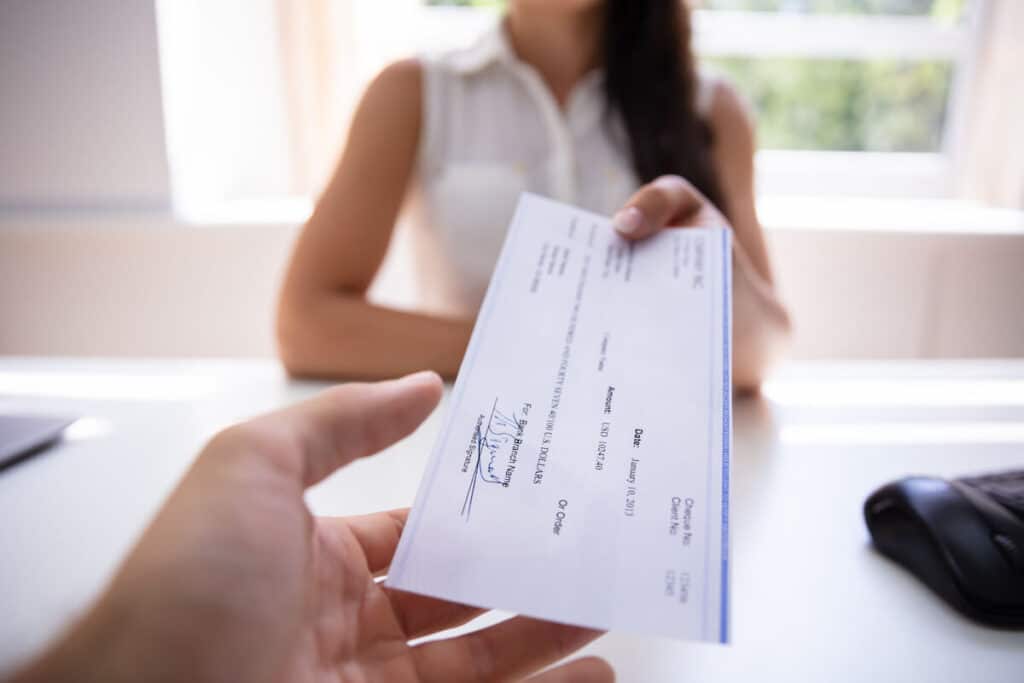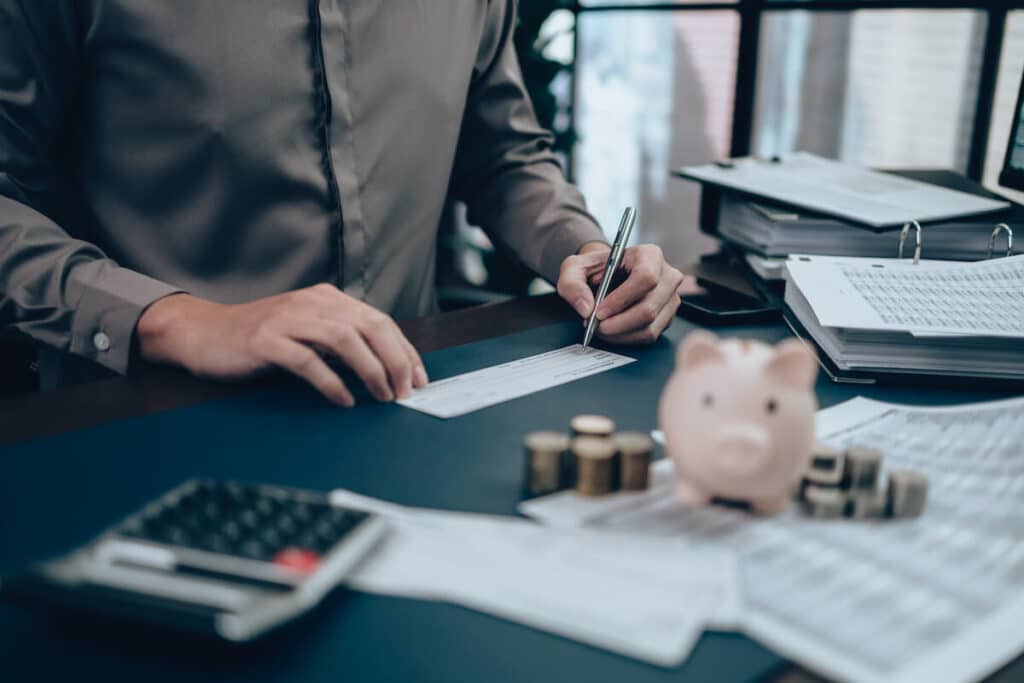- You usually need a bank account to get a cashier’s check, but some banks will give them to non-customers if you pay in cash.
- Debit cards might work at some places, but cash is often needed for non-members.
- Think about using money orders, certified checks, or digital transfers if a cashier’s check is not available.
- Always bring a valid ID, and call ahead to see the institution’s rules.
If you need to make a big or safe payment, a cashier’s check is a great option. Unlike personal checks, which might bounce or take time to clear, cashier’s checks are guaranteed by a bank and paid for upfront. This makes them ideal for large purchases or important transactions. But what if you don’t have a bank account? It might be harder, but you can still get a cashier’s check or another option. In this guide, we will explore your best choices and what to consider if you need a cashier’s check without a bank account.
What Is a Cashier’s Check?
A cashier’s check is a kind of check given by a bank or credit union. This check is guaranteed by the bank. When you get a cashier’s check, you pay the bank the full amount first. You can usually pay with cash or money from your account. After that, the bank makes the check using its own money.
This makes cashier’s checks safer than regular checks. They don’t bounce, and the money is often available right away for the person receiving it. Cashier’s checks are commonly used for:
- Payments for homes or cars.
- Security deposits.
- Tuition fees.
- Other large transactions where safety from fraud is important.
Can I get a cashier’s check without a bank account?
This is a common question. The easy answer is: yes, but it depends on the bank. Most regular banks give cashier’s checks only to people who have an account. If you do not have a checking or savings account, here are your options:
1. Open a Free Checking Account
One of the easiest ways to get a cashier’s check is to open a free checking account at a bank or credit union. Many banks offer free or cheap checking accounts that don’t require a minimum balance. After you deposit money in your account, you can ask for a cashier’s check. This usually comes with a small fee of $5 to $15.
If you want to do more money transactions later, starting an account can save you time. It can also give you other services like mobile banking, paying bills online, or using ATMs.

Visit banks that give cashier’s checks to people who do not have a bank there.
Some banks will provide a cashier’s check even if you are not their customer. However, you must pay in cash. Each bank has its own rules. It is smart to call ahead and ask if they can help you, even if you are not a member.
Banks and credit unions that may give cashier’s checks to people without a bank account include:
- Wells Fargo (in some spots)
- Regions Bank
- PNC Bank
- U.S. Bank
- Citizens Bank
Make sure you have a government ID and the exact cash for the check and fee. People who are not members may have to pay more in fees. Also, not every branch offers this option.
3. Consider a Certified Check Instead
A certified check is similar to a cashier’s check, but it is taken from your own account. The bank makes sure you have enough money. It sets that cash aside and stamps the check to show it is certified.
This option still needs you to have a checking account. Some banks might give certified checks to people who do not have an account with them for cash. Call ahead to check first.
4. Try a Money Order for Smaller Amounts
If you cannot get a cashier’s check, a money order is a good option. This is especially true for amounts less than $1,000 or $2,000.
You don’t need a bank to buy a money order. You can use it for things like rent, bills, and deposits. You can get one at:
- U.S. Postal Service locations
- Walmart
- Western Union
- MoneyGram agents
- 7-Eleven or other shops
Money orders typically cost from $1.65 to $2.20 at the post office. At Walmart, they are about $1. You can pay using cash or a debit card. Most places do not accept credit cards for payment.
5. Use a Wire Transfer or ACH Payment
If you don’t need a paper check, a bank-to-bank transfer might be faster. Wire transfers and ACH payments are both safe and can be used for big payments.
- Wire transfers happen faster. They can be done the same day or the next day, but they usually cost more, typically between $10 and $35.
- ACH payments usually take 2 to 3 business days to clear and are often free.
Some services let you use a debit card or credit card to send money. You can do this even if you do not have a bank account. This is normal with money sending services.
6. Try a Money Transfer App
Apps like Remitly, Venmo, or Cash App let you send money without needing a regular bank account. You can link a debit card or credit card. You can also add cash at certain locations, like CVS or Walgreens in the U.S.
Remitly, for example, lets you send money to other countries. It provides cash pickup in the country of the person you are sending money to. This is really good if you want to send money overseas and cannot use a cashier’s check.

Frequently Asked Questions (FAQs)
Can I get a cashier’s check at the post office or Walmart?
No, the U.S. Postal Service and Walmart do not have cashier’s checks. They offer money orders instead. Money orders are a safe choice for smaller transactions. If someone asks you for a cashier’s check and the amount is under $1,000, talk to the person you are giving it to. Ask if they will take a money order instead.
Can I Get a Cashier’s Check Without an ID?
It’s not likely. If you are buying or cashing a cashier’s check, most banks will ask for a real, government-issued photo ID to prevent fraud. This is a normal safety measure, even for people who do not have an account there.
Can I Get a Cashier’s Check With a Debit Card?
If the bank or money service allows people without accounts to buy a cashier’s check, some may accept debit cards. However, many will require cash from those who do not have an account. If you have an account, you can often pay with your debit card from your checking account.
Always call the bank first to check how to pay.
Can I Get a Cashier’s Check With No Money?
No, you must pay the full amount of the cashier’s check first, along with any fee. It doesn’t matter if you use a bank, debit card, or cash. The money needs to be checked before you get the check.
Can You Order a Cashier’s Check Online?
Yes, if your bank allows it. Some banks let you:
- Log in to online banking
- Request a cashier’s check
- Have it sent to you or the person
Delivery may take a few days. So, you should plan ahead. Normally, online ordering is not open for people who are not customers.
Can You Buy a Blank Cashier’s Check?
No, cashier’s checks must be made for a certain amount and a specific person. You cannot buy a blank cashier’s check to fill in later.
Can you cash a cashier’s check if you do not have a bank?
Yes. You can often get cash for a cashier’s check at the bank that gave it to you, even if you don’t have an account there. You will need:
- A photo ID that matches the name on the check.
- You might need to pay a fee to cash it.
Other options include:
- Cashing it at a cash-check store (fees apply)
- Loading it onto a prepaid debit card
- Using a mobile deposit if you have mobile banking or a refillable app
